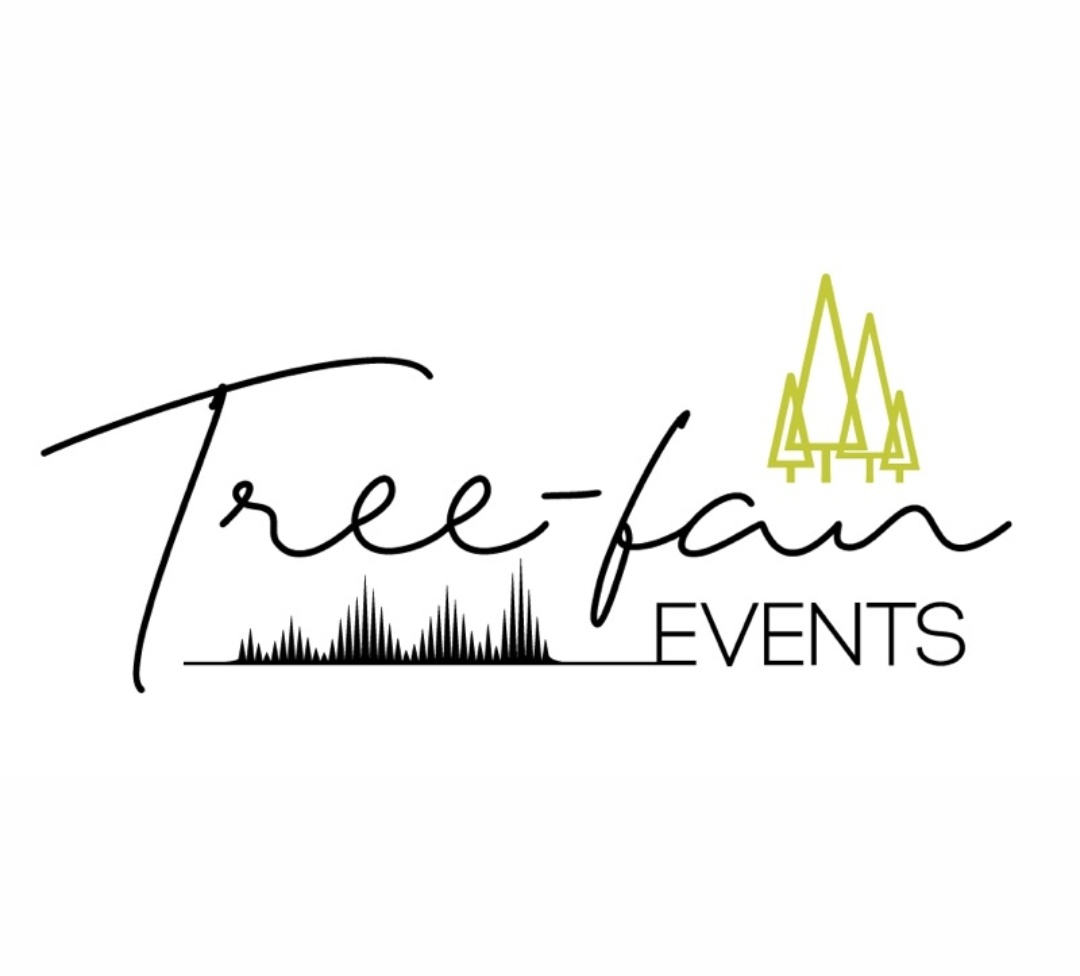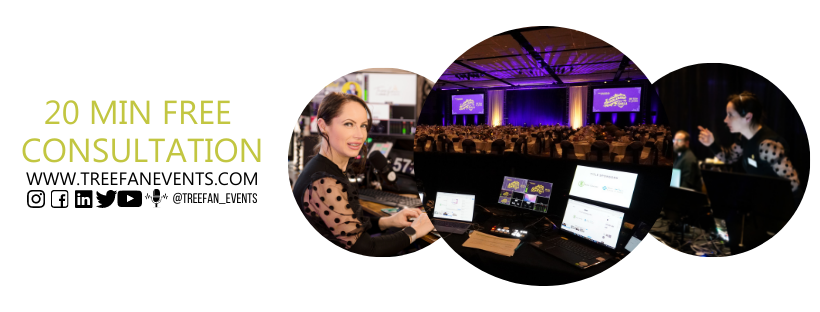Mid-February we got the opportunity to work on a large-scale event that for the first time during COVID had an audience of pre-pandemic numbers.
We’ve all experienced how Covid has forced so many of us (organizers AND suppliers) into an intense period of innovation and reinvention, and so to attend and work at an event that felt a whole lot like the events we used to plan and produce before 2020, and it was glorious, to say the least. At least for some of us, the extroverts that couldn’t wait to get back to in-person and rub elbows with a dozen other people in the buffet line, give hugs and laugh our face-off while spilling our coffees on our whiter than snow t-shirts (I’m sure that never happened to anyone).
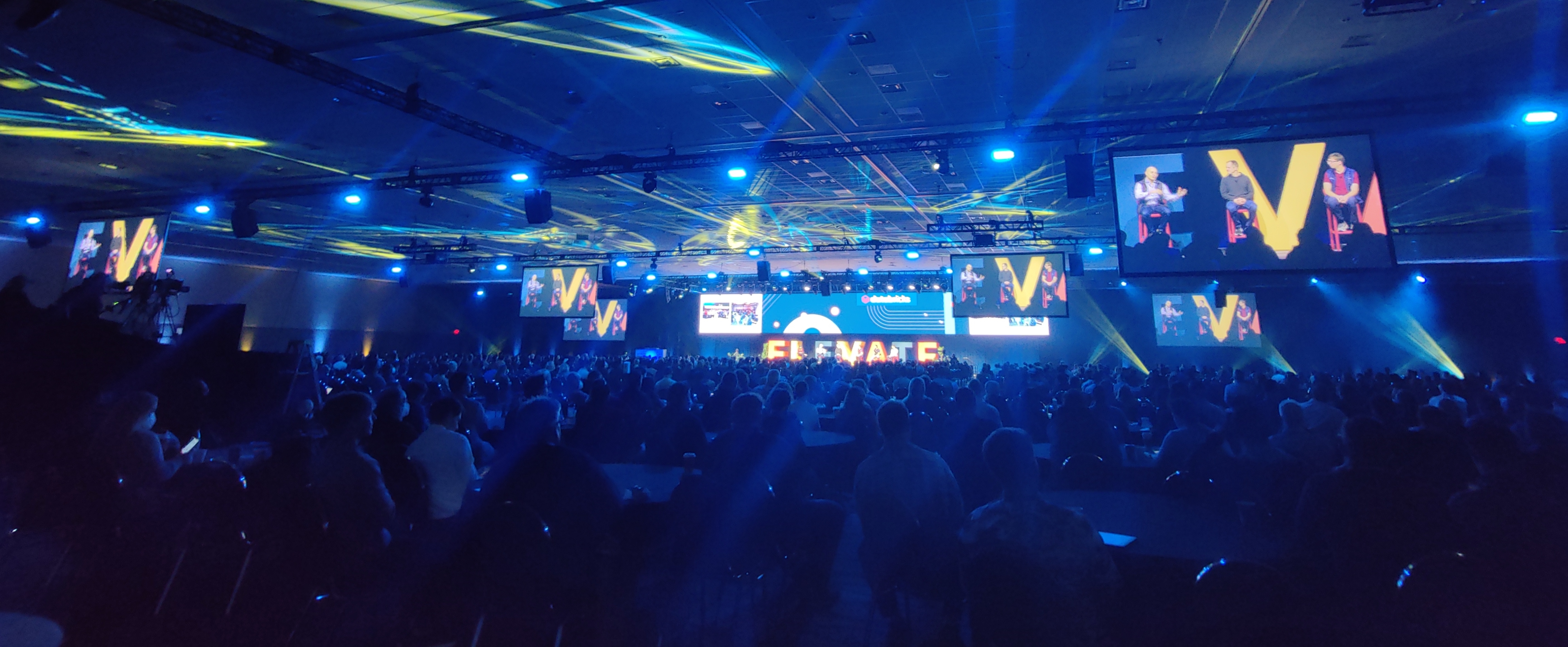
And so, for one week, putting masks aside and vaccination cards, it felt like we were back to the pre-COVID event reality when gathering in large numbers was not the exception but the norm. This event did it right at the Anaheim Convention Center and a couple of the nearby venues and everyone had a great experience!
As we were there, enjoying a REAL conference for the very first time in two years, the main takeaway that came to mind was that there are hope #eventprofs, it can be done, if done the right way.
So in the article below, I will share FIVE elements that enabled this large-scale hybrid conference to be a success.
-
Asynchronous content streaming
After more than 2.5 years of the pandemic and numerous online conferences, meetings, classes, and discussions, indications are that the event community is ready for face-to-face interactions and in-person meetings. Data scientists thrive on in-person discussions and interactions, the raison d’etre for the type of meetings and conferences. In addition to hearing talks and new research, other interactions at technology conferences are crucial, to discuss ideas and set up collaborations. These are missed in virtual meetings. Q&A and discussions following scientific talks are not as robust in a virtual environment. Virtual meetings, while necessary in a pandemic, only work to an extent. Another aspect missing from virtual meetings is the ‘running into’ colleagues that happen by chance at in-person meetings. The absence of in-person networking is a major factor.
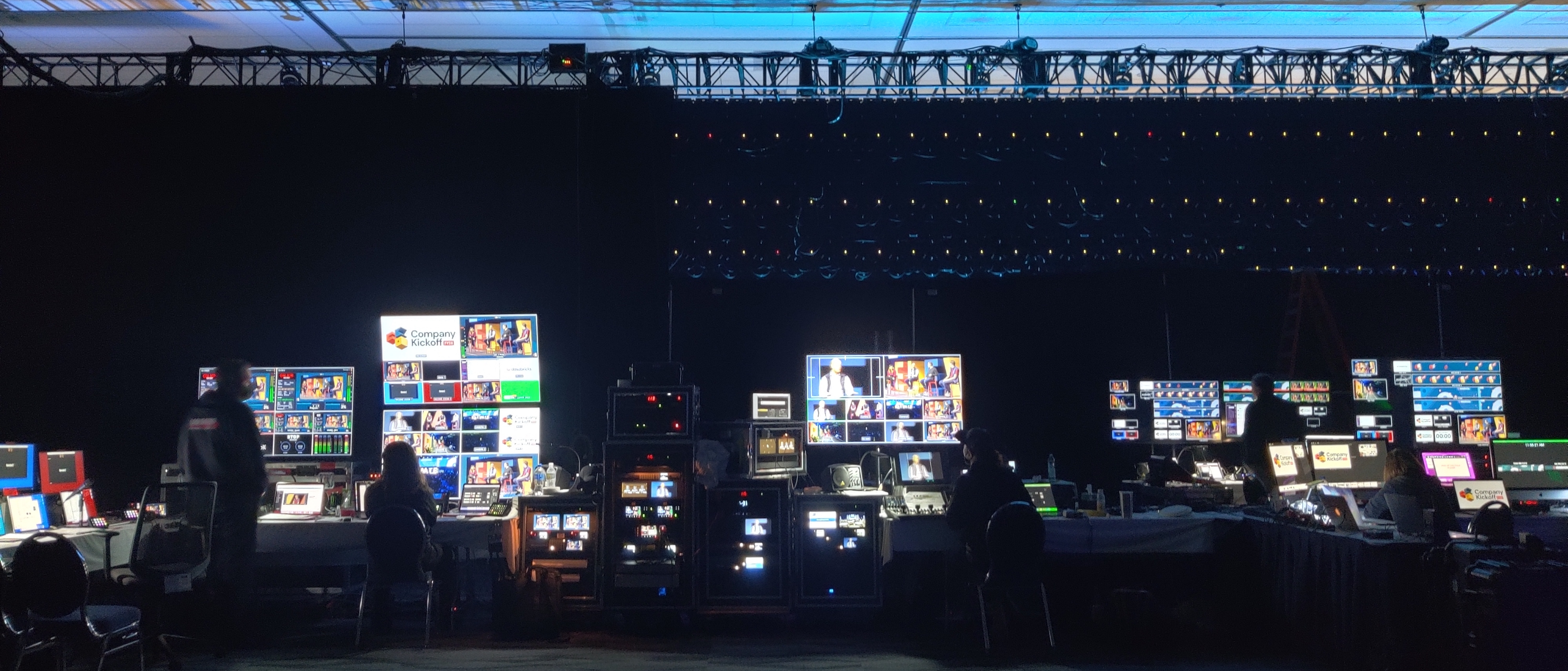 With that said, we believe that virtual meetings are here to stay and need to continue to evolve as a complement to the in-person experience.
With that said, we believe that virtual meetings are here to stay and need to continue to evolve as a complement to the in-person experience.
The hybrid format for this company kickoff conference for a Silicon Valley data analytics company was developed partly to enhance the meeting experience for in-person and virtual meeting attendees and partly owing to logistical reasons. All the in-person keynote, as well as special talks, and the regular breakout sessions at the nearby venues were live-streamed to the virtual audience. In addition, all presenters were encouraged to upload recordings of their talks to a virtual meeting platform that could be viewed asynchronously by the virtual conference attendees (and in-person attendees as well). All in-person attendees were still able to fully participate in the virtual meeting the following week since every session got recorded live and uploaded to the platform, something that organizers need to keep in mind since an in-person audience will most likely not engage in the virtual sessions offered if they overlap with other in-person sessions and activities or networking opportunities.
-
Networking is paramount
Any large-scale event that hasn’t happened since pre-covid needs to keep a large focus on the in-person networking aspect of their event because to the in-person attendees, many of whom have not experienced any gathering in over 2 years, networking is paramount importance. That was true for IMEX in Nov 2021 as well SXSW most recently.
There was a large focus on in-person networking. We knew that networking was of paramount importance to the in-person attendees’ experience after nearly 2 years without in-person interactions. We wanted to reserve ample time in the program for attendees to interact. This split schedule also allowed logistically for better organization of the two meeting components, which translated to a better meeting experience for in-person and virtual meeting attendees.
The attendees had the freedom to “choose their own adventure”, as they navigated 10+ different content stages throughout the four-day event, as well as dozens of amazing networking events and after-parties. 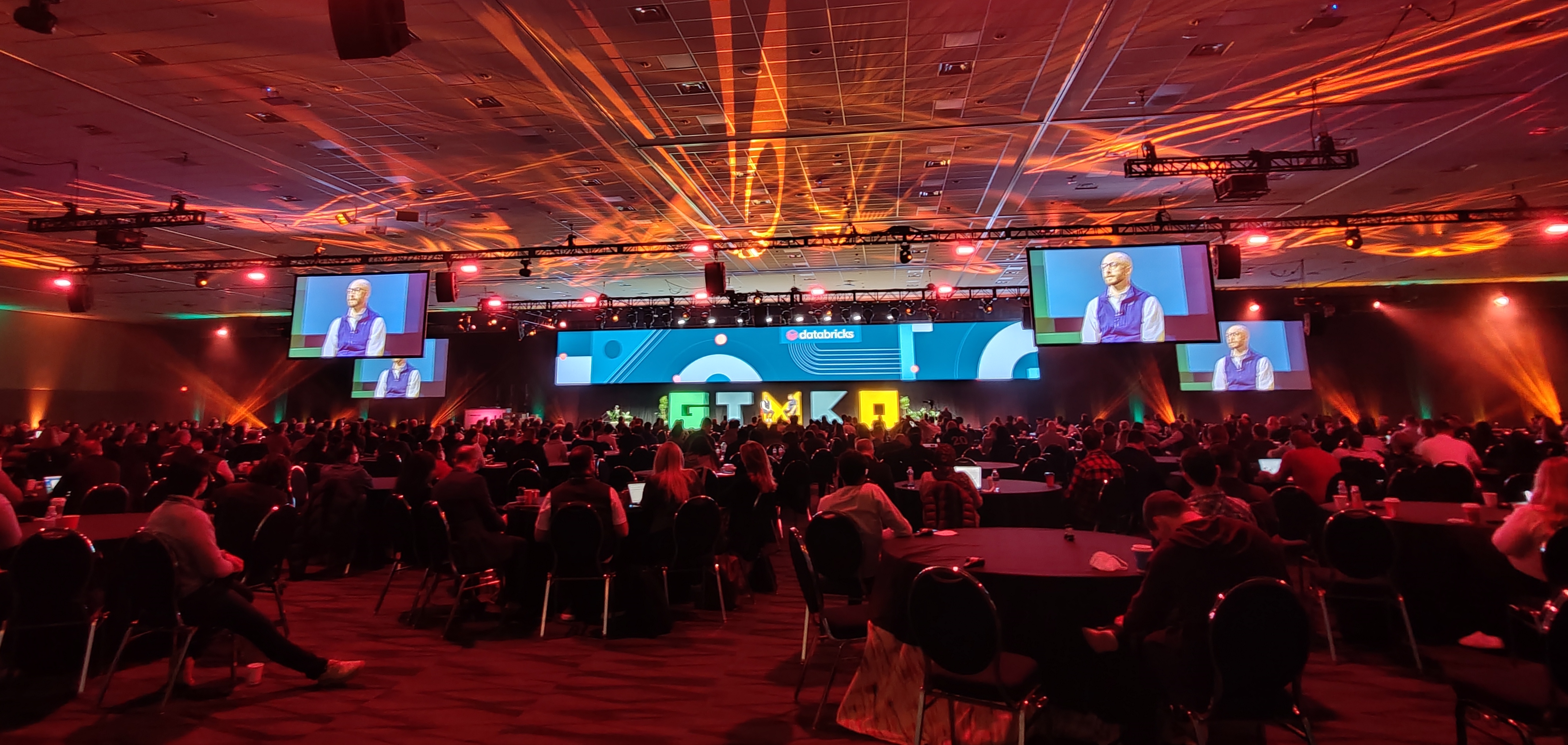
Quality ‘impromptu’ networking — the human connection — is something that is lacking in the virtual environment. However, whether or not a technology solution can be developed to replicate that remains to be seen.
-
No to main stage remote speakers
Coming off two years of digital content and presentations more or less attractive, the reality is remote speakers are a great idea theoretically, but practically an in-person audience will have a hard time connecting to a remote speaker, even if the technology and production value is up to par. Due to last-minute Covid-related health issues, the organizers of this conference needed to make the hard call and bring in a few panelists virtually, and while the production value of the presentation was TV show level, it was evident that there was a disconnect between the in-person audience and the remote panelists as opposed to the panelists in person.
-
Be open to experimenting
This hybrid conference was a chance to try new ways of doing things with large-scale audiences in preparation for the June worldwide conference that this company is planning for as we speak. Here are some of the experiments that have taken place built on a model shared recently by one of the top event industry thought leaders, Julius Solaris:
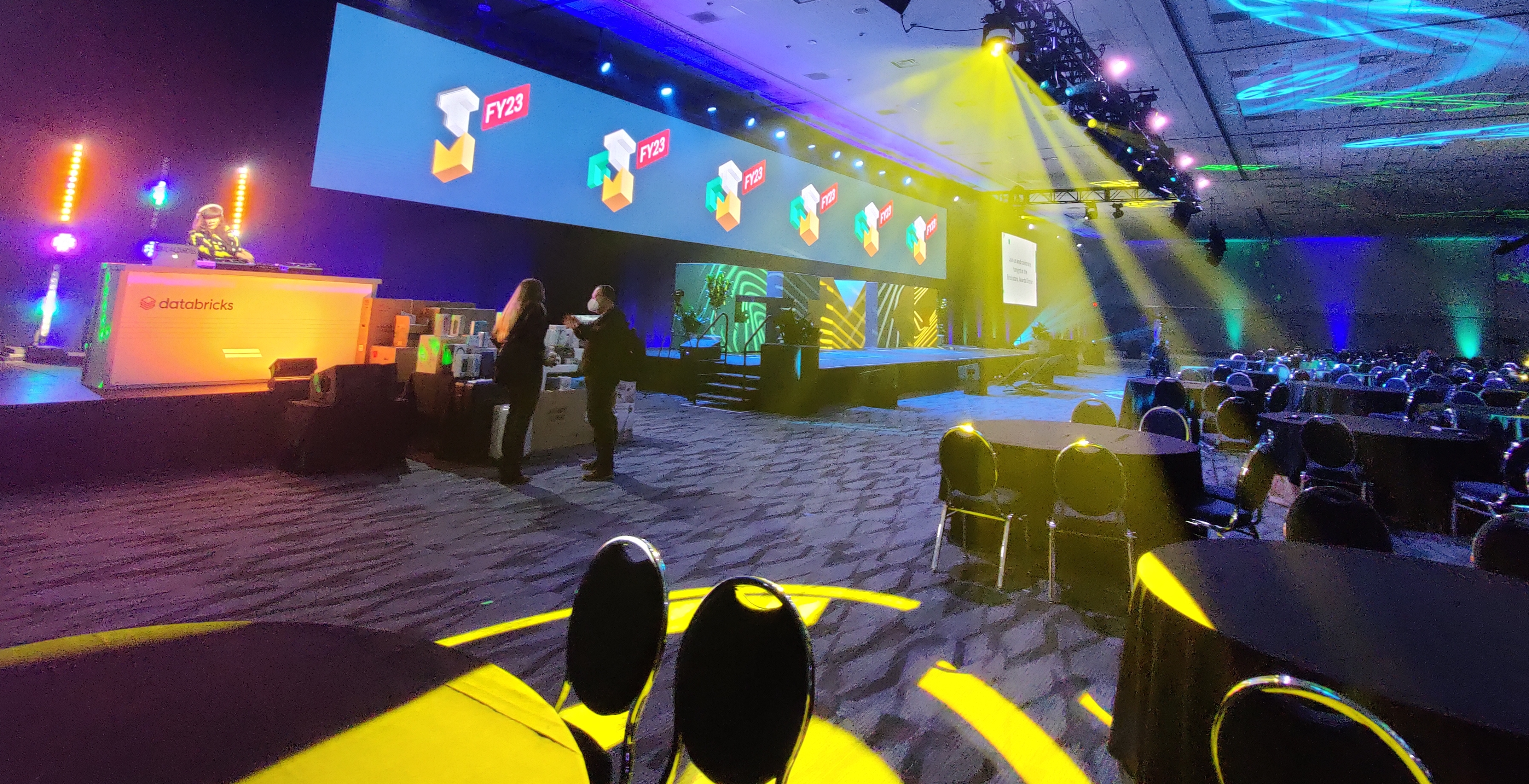
- Shorter sessions. The playbook of events has always considered one-hour-long sessions, we brought that down to 15-20 minutes fast sessions.
- New formats, such as bullet point sessions. A speaker would present 3 bullet points for 3 minutes, 3 slides, 1 minute per slide. Only actionable advice. With 5 speakers, you get a LOT of practical advice in 15 mins.
- Empty chair. Give voice to a member of the audience that would be selected to come and join the panel and share their opinion.
- Follow TV. Fast segments with short DJ breaks with visual graphics, ads, or activations
- Relax. We always started with music and had a DJ break with relaxing and engaging tunes. mini-wellness breaks, meditation breaks, yoga stretch sessions can all give white space to attendees.
-
Staff your technology and production to the brink
The behind-the-scenes for this hybrid conference included a team of over 40 specialized techs running different aspects of the event, from in-person plus virtual sound engineers, lighting designer and technicians, video V1, V2, V3, streaming techs, content techs, graphics techs, recording tech, backup recording tech, stage managers, speaker and talent managers, remote speaker managers, show callers, event platform management, not counting the setup/ rehearsals/ and strike crew that was a separate army in itself.
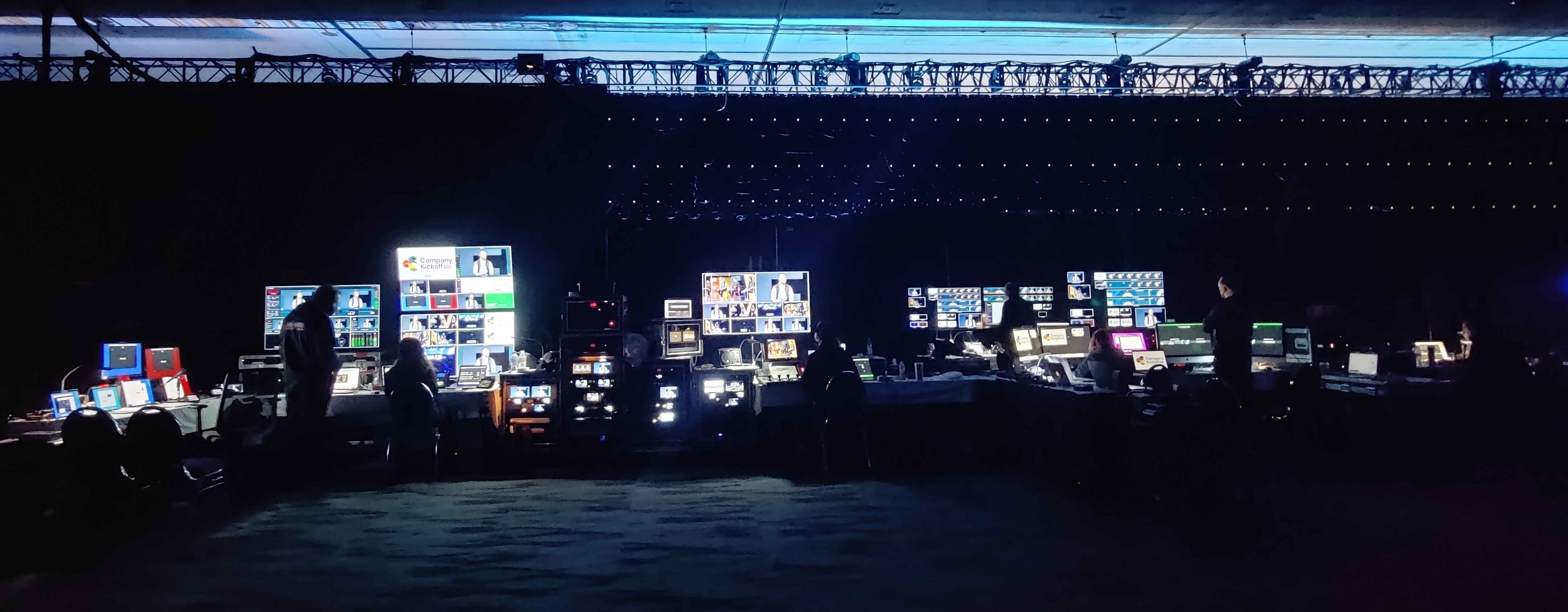
This particular conference also had over 30+ breakouts fully set up in a hybrid format and each one of them had a very particular workflow to make it easy for each one of the techs leads to troubleshoot on the fly, but also for the tech crew to set up to code to make sure nothing gets missed.
It is likely that future conferences for this particular client will continue to include a virtual meeting component for those who may not be able to make it to the in-person meeting. Our current experience with
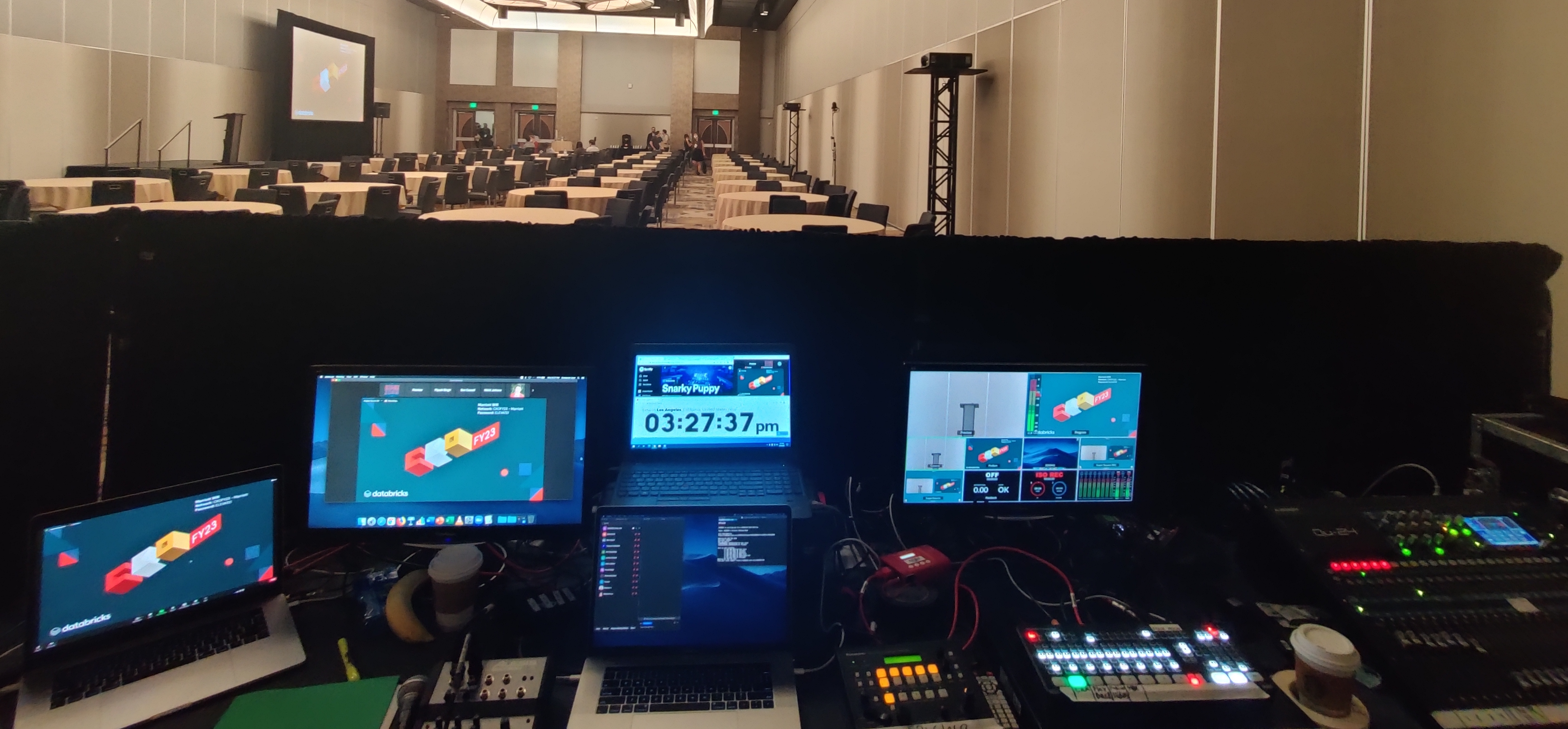
this hybrid conference is helping to set the stage for future hybrid large-scale conferences. We understand that all of this makes for a whole lot of differing opinions on how the events industry gets back to large-scale events and what that looks like. The debates and opinions being shared are fascinating and sometimes confusing.
If you’re an event planner or organizer that is considering a similar hybrid model for their meeting or conference, here’s the one takeaway: do not corner yourself into silos, embrace the creative technology and production tools you have available to design events that change behaviors. Be open to using all the tools to engage your audience and to serve them to the best of your ability. Asynchronous hybrid can be a great solution for some events but again it feels like someone is trying to force the use of a tool at all costs. Some events are better in-person, some online, some hybrid and planners deserve the freedom to choose what’s best.
We also had many internal discussions on the reduced environmental impact of the in-person and virtual components of the hybrid meeting. Reduced travel of course helps the environment by reducing carbon emissions. But this has to be balanced by the advantages afforded by an in-person meeting. The hybrid format for this hybrid conference allowed for a more sustainable event.
One of the main challenges with this conference was the uncertainty in what this meeting would look like, whether it would be a hybrid meeting or a fully virtual meeting, given the timing for the planning for this meeting, as well the qualified labor shortage affecting the event industry.
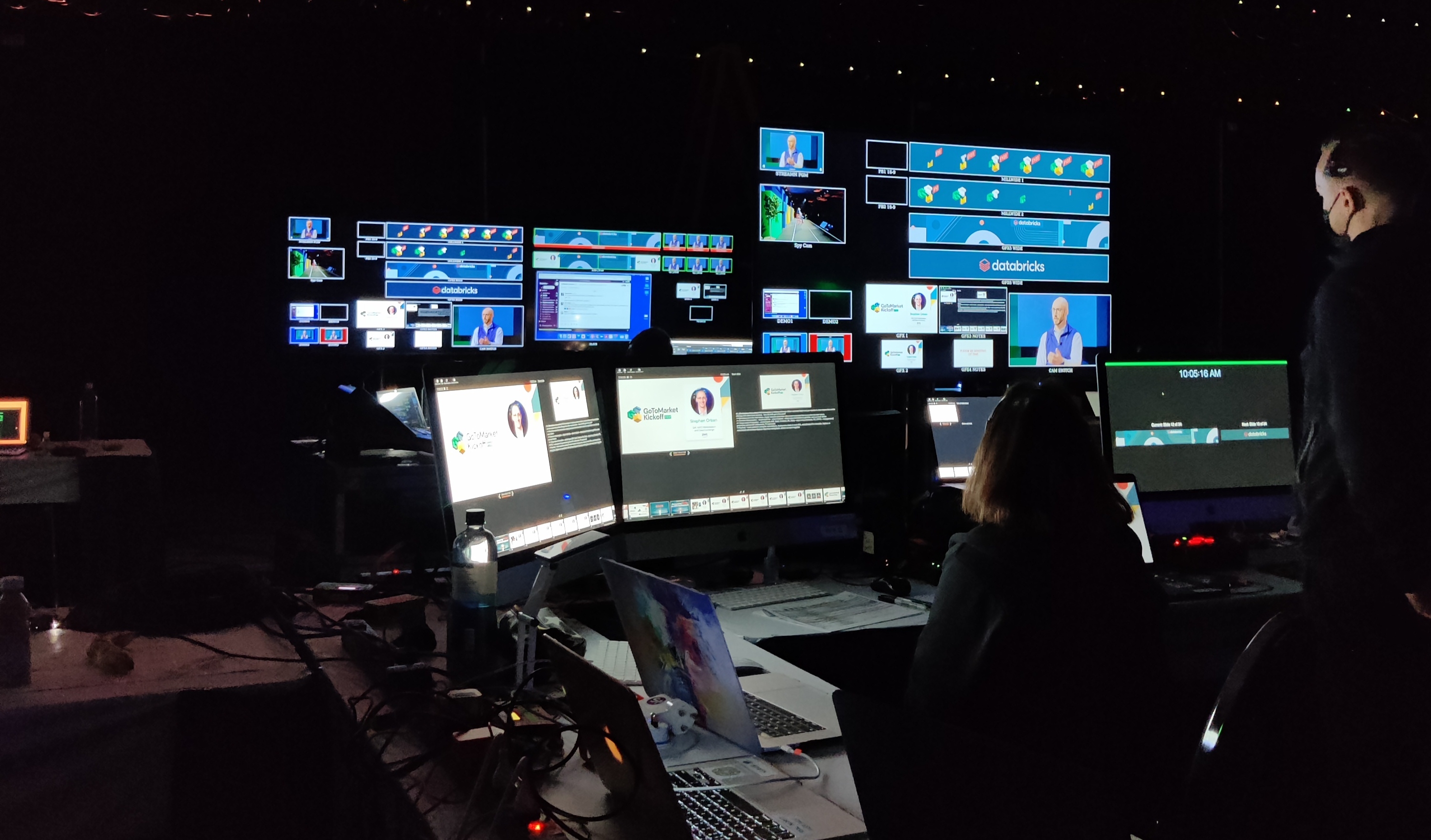 In closing,
In closing,
top three main takeaways:
- The pandemic has fundamentally changed the way most people value their time – and so their willingness to take time out, even for a day, is less than it was.
- we’re going to see lower attendance at in-person events, moving forward and that is not a bad thing, that makes for more elevated, inclusive experiences
- determining what your main pool of attendees value is the number one priority now.
As new advancements in virtual and hybrid meeting technologies are being developed every day, we continue to monitor those for solutions that will provide the easiest and most streamlined way for our clients to plan and produce events that change behaviors. There are so many opportunities to innovate today in both virtual and in-person events. Consolidation will redefine the value of virtual. A better use case for the hybrid will also arise and the tech opportunity for in-person will be driven by solid hybrid event strategies.
In conclusion,
No event happens in a silo and tacking a hybrid event is no different. It takes an army of planners, coordinators, front of scenes staff, and behind of scenes staff to come up with the strategy for the event, the planning of every detail, and the execution of that plan. Contact us if you’d like to discuss your hybrid event’s particular details in a future one-on-one consultation.

